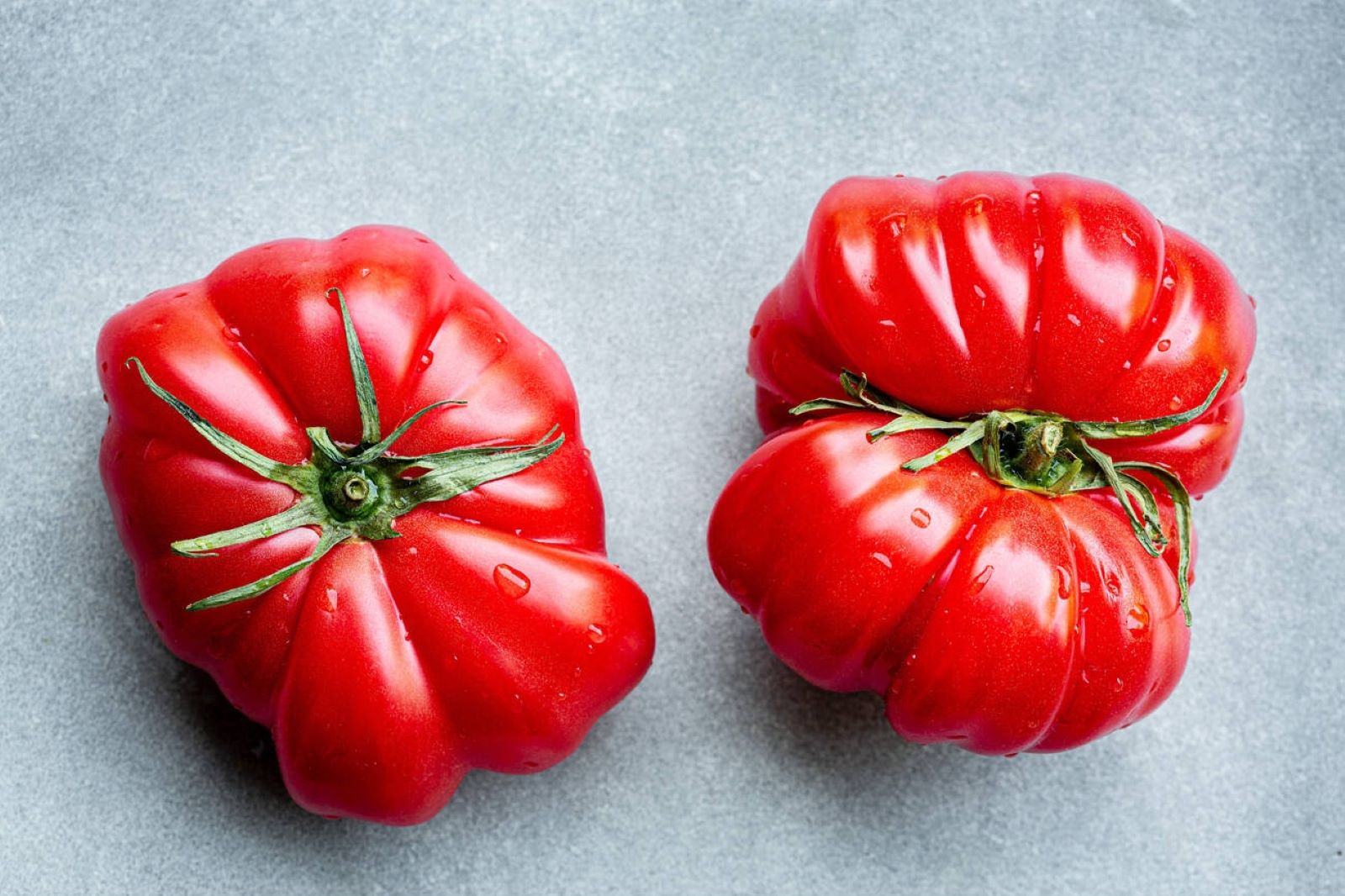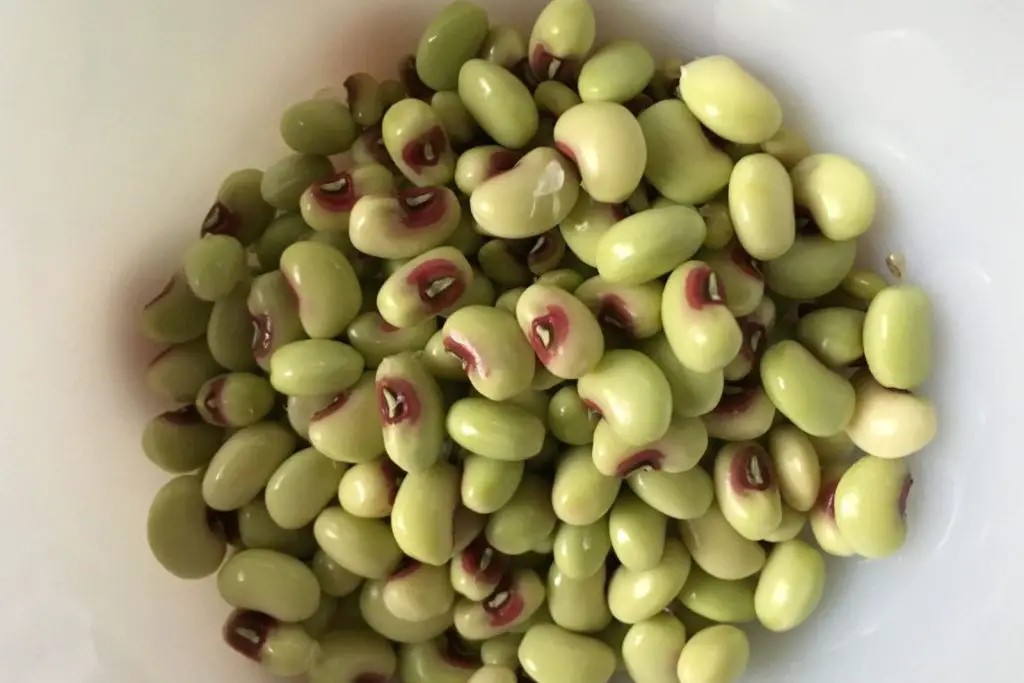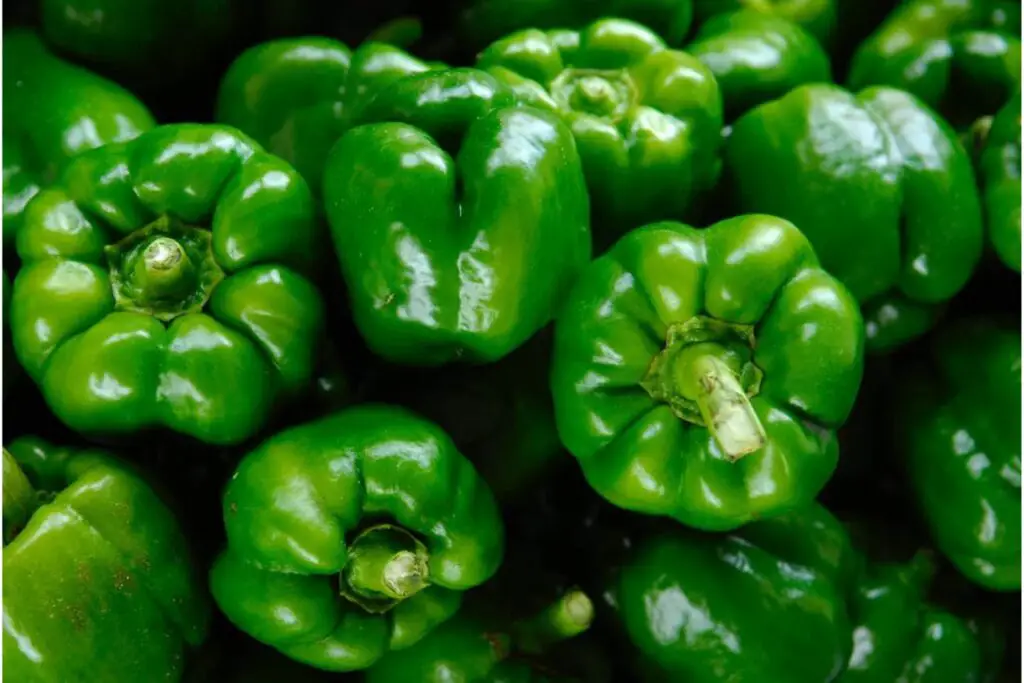
Heirloom tomatoes, known for their vibrant colors and rich flavors, are a culinary treasure that embodies the essence of summer. These unique tomatoes come in a variety of shapes, sizes, and hues, each offering a distinct taste and texture. Whether used in salads, salsas, or simply enjoyed fresh, heirloom tomatoes bring a burst of freshness and complexity to any dish. If you find yourself with an abundance of heirloom tomatoes or want to capture their essence for later use, freezing is a great option. Freezing heirloom tomatoes allows you to preserve their exceptional flavor and enjoy the taste of summer all year round. In this guide, we will explore the best practices for freezing heirloom tomatoes, including proper preparation, storage techniques, and tips for using them in your favorite recipes. Join us as we delve into the world of freezing heirloom tomatoes and unlock the secrets to preserving their exceptional taste and vibrant colors.
Here are the simple steps to freeze heirloom tomatoes:
- Step 1: Select Ripe Heirloom Tomatoes
- Step 2: Wash and Prepare the Tomatoes
- Step 3: Blanch the Tomatoes
- Step 4: Peel and Seed the Tomatoes (optional)
- Step 5: Prepare the Tomatoes to Freeze
- Step 6: Flash-Freeze the Tomatoes
- Step 7: Package and Seal the Tomatoes
- Step 8: Label and Date the Packages
- Step 9: Store in the Freezer
Step 1: Select Ripe Heirloom Tomatoes
Choosing the right tomatoes is crucial when it comes to freezing heirloom tomatoes. Opting for fully ripe, high-quality tomatoes ensures that you’ll preserve the best flavors and textures in your frozen tomatoes. Here’s why selecting ripe heirloom tomatoes is important:
- Flavor preservation: Ripe tomatoes have reached their peak flavor, offering a sweet, tangy, or rich taste, depending on the variety. Freezing ripe tomatoes helps lock in these flavors, allowing you to enjoy the same delicious taste even after they’ve been frozen.
- Texture maintenance: Ripe tomatoes have a firm yet tender texture, making them enjoyable to eat. When frozen, they retain their texture better compared to under ripe or overripe tomatoes, which can become mushy or grainy when thawed.
- Nutrient retention: Ripe tomatoes are packed with essential nutrients, including vitamins A, C, and K, as well as antioxidants like lycopene. By freezing ripe heirloom tomatoes, you can preserve these valuable nutrients and enjoy their health benefits even during the off-season.
When selecting ripe heirloom tomatoes for freezing, keep the following steps in mind:
- Firmness: Choose tomatoes that are firm to the touch. Gently press the tomato, and it should yield slightly without feeling overly soft or mushy.
- Vibrant colors: Look for tomatoes with vibrant hues that are characteristic of their specific variety. Heirloom tomatoes come in a wide range of colors, including red, yellow, orange, green, purple, and even bi-colored combinations. Vibrant colors indicate that the tomatoes are at their prime ripeness.
- No signs of overripeness or damage: Avoid tomatoes with blemishes, cracks, or signs of rotting. Overripe or damaged tomatoes may not freeze well and can compromise the quality of the final product.
By selecting ripe heirloom tomatoes, you lay the foundation for successful freezing. The flavors, textures, and nutrients of these tomatoes will be well-preserved, allowing you to enjoy their exceptional qualities whenever you choose to use them in your recipes.
Step 2: Wash and Prepare the Tomatoes
Before freezing heirloom tomatoes, it’s essential to properly wash and prepare them. This step ensures that any dirt, debris, or potential contaminants are removed, allowing for a clean and safe freezing process. Here’s why washing and preparing the tomatoes is important:
- Hygiene and safety: Washing the tomatoes helps eliminate any dirt, bacteria, or pesticides that may be present on the skin. This is particularly important if you’re using homegrown tomatoes or those bought from local markets, as they may have come into contact with soil or other external elements during the growing process.
- Improved storage quality: Removing any dirt or debris from the tomatoes helps prevent spoilage during storage. Dirt particles can harbor moisture, which can lead to the growth of molds or bacteria, compromising the quality and safety of the frozen tomatoes.
Here’s a step-by-step breakdown of how to wash and prepare the tomatoes for freezing:
- Rinse under cool running water: Place the tomatoes under gentle, cool running water. Gently rub the tomatoes with your hands to remove any visible dirt or debris. This simple rinsing process helps eliminate loose particles from the surface.
- Remove the stem: Using a sharp knife, carefully cut off the stem of each tomato. Make a small incision around the stem, angling the knife towards the center of the tomato. This ensures that the stem and core are completely removed.
- Core the tomato: After removing the stem, continue cutting around the core of the tomato. The core is the tough, whitish part that extends from the stem down to the base. Remove the core completely to enhance the freezing process and minimize any potential bitterness.
- Inspect for blemishes: Take a moment to inspect the tomatoes for any blemishes, such as cuts, bruises, or signs of spoilage. If you come across any damaged areas, carefully cut them out using a clean knife to ensure only the best parts of the tomato are included in the freezing process.
By washing and preparing the tomatoes, you ensure that they are clean, safe, and free from any unwanted debris. This step sets the foundation for a successful freezing process and helps maintain the quality of the tomatoes throughout their time in the freezer.
Step 3: Blanch the Tomatoes
Blanching is a crucial step in the process of freezing heirloom tomatoes. This technique involves briefly immersing the tomatoes in boiling water, followed by a quick cooling in an ice bath. Blanching helps preserve the texture, flavor, and color of the tomatoes, making them more freezer-friendly. Here’s why blanching is an important step:
- Enzyme deactivation: Tomatoes contain enzymes that can cause the fruit to deteriorate over time, even when frozen. Blanching deactivates these enzymes, helping to maintain the quality of the tomatoes during storage and preventing the loss of flavor, color, and texture.
- Skin removal: Blanching also facilitates the removal of the tomato skins, which can become tough and chewy when frozen. The brief exposure to boiling water causes the skin to loosen, making it easier to peel off later if desired.
- Retained texture and color: Blanching helps the tomatoes maintain their firmness and vibrant color after freezing. The heat exposure during blanching helps to partially cook the tomatoes, resulting in a better texture and preserving their visual appeal.
Here’s a step-by-step breakdown of how to blanch the tomatoes:
- Prepare boiling water: Fill a large pot with water and bring it to a rolling boil. The pot should be large enough to accommodate the tomatoes comfortably without overcrowding.
- Prepare an ice bath: While the water is boiling, prepare a bowl or sink filled with ice water. This ice bath will be used to rapidly cool the tomatoes after blanching.
- Score the tomatoes (optional): Using a sharp knife, make a shallow “X” mark on the bottom of each tomato. This scoring helps the heat penetrate the skin and facilitates easier peeling later on, if desired.
- Blanch the tomatoes: Carefully place the tomatoes into the boiling water. Submerge them completely and blanch for about 30 to 60 seconds. The exact timing may vary slightly depending on the size and ripeness of the tomatoes.
- Transfer to the ice bath: Using a slotted spoon or tongs, immediately transfer the blanched tomatoes to the ice bath. This rapid cooling halts the cooking process and preserves the texture and color of the tomatoes.
- Cool completely: Allow the tomatoes to sit in the ice bath for a few minutes, or until they are completely cooled. This ensures that the tomatoes are no longer warm before proceeding to the next steps of freezing.
By blanching the tomatoes, you deactivate enzymes, ease the skin removal process, and maintain the desired texture and color. This step enhances the overall quality of the frozen tomatoes and ensures that they retain their delicious flavors when used in future recipes.
Step 4: Peel and Seed the Tomatoes (optional)
After blanching and cooling the heirloom tomatoes, you have the option to peel and seed them. This step is not mandatory but can be done to achieve a smoother texture in your frozen tomatoes or if you prefer to remove the skins and seeds. Here’s why peeling and seeding tomatoes is optional and how to do it:
- Texture preference: Peeling and seeding the tomatoes can result in a smoother consistency when using them in recipes. Some individuals prefer the texture of peeled and seeded tomatoes, especially in dishes where a smoother texture is desired, such as sauces, soups, or salsas.
- Removal of tough components: Tomato skins can become tough and chewy when frozen, so peeling them off can enhance the overall eating experience. Additionally, removing the seeds can eliminate any potential bitterness and create a more refined taste.
Here’s a step-by-step breakdown of how to peel and seed the tomatoes:
- Peel the tomatoes: Start by gently peeling off the skin using a paring knife or your fingers. The blanched tomatoes should have loosened skins, making them easier to remove. Begin at the blanched end of the tomato and carefully peel the skin away in strips.
- Cut the tomatoes in half: Once the tomatoes are peeled, cut them in half horizontally using a sharp knife. This will expose the inner flesh and make it easier to remove the seeds.
- Remove the seeds: With a spoon or your fingers, gently scoop out the seeds and their surrounding gel from each tomato half. The seeds can be easily loosened and removed from the flesh. Discard the seeds and gel.
- Optional: Further chop or dice the tomatoes (if desired): After peeling and seeding, you can choose to further chop or dice the tomatoes according to your preference. This step is especially useful if you want the tomatoes to be in smaller pieces for specific recipes.
It’s important to note that peeling and seeding the tomatoes is a matter of personal preference. If you prefer to keep the skins and seeds, you can skip this step entirely and proceed to the next step of preparing the tomatoes for freezing.
By peeling and seeding the tomatoes, you can achieve a smoother texture and eliminate any potential bitterness from the seeds. However, if you enjoy the added texture and flavor that skins and seeds provide, feel free to leave them intact.
Step 5: Prepare the Tomatoes to Freeze
Once the heirloom tomatoes have been blanched, cooled, and optionally peeled and seeded, it’s time to prepare them for freezing. This step involves deciding whether to freeze the tomatoes whole or in a sliced or diced form, and arranging them appropriately on a baking sheet. Here’s why this step is important and how to proceed:
- Convenience and portioning: Preparing the tomatoes in the desired form before freezing allows for greater convenience and ease of use in future recipes. Depending on your culinary needs, you can freeze the tomatoes whole, sliced, or diced, making it simpler to portion them out when you’re ready to cook.
- Freezing efficiency: Arranging the tomatoes in a single layer on a baking sheet helps ensure that they freeze quickly and evenly. By preventing the tomatoes from sticking together, this method allows for better airflow during the freezing process, reducing the risk of ice crystal formation and maintaining the quality of the tomatoes.
Here’s how to prepare the tomatoes for freezing:
- Determine the desired form: Decide whether you want to freeze the tomatoes whole or in a sliced or diced form. Consider the types of recipes you plan to use the tomatoes in to make an informed decision.
- For whole tomatoes: If freezing the tomatoes whole, place the blanched and peeled tomatoes on a baking sheet lined with parchment paper. Make sure to leave some space between each tomato to allow for airflow.
- For sliced or diced tomatoes: If opting for sliced or diced tomatoes, cut them into the desired shape and size. Arrange the slices or dice in a single layer on the parchment-lined baking sheet, ensuring that they are not touching or overlapping.
- Space management: If freezing a large batch of tomatoes, you may need to use multiple baking sheets or work in batches to ensure that the tomatoes freeze quickly and efficiently. It’s important to maintain a single layer of tomatoes on each baking sheet.
- Optional: Flash-freezing: For an extra precautionary step, you can flash-freeze the prepared tomatoes on the baking sheet for about 2 to 3 hours. Flash-freezing involves placing the baking sheet in the freezer until the tomatoes are completely frozen. This method helps individualize the tomatoes, making it easier to remove the desired quantity when needed without thawing the entire batch.
By preparing the tomatoes for freezing, you ensure convenience and efficient freezing. Whether freezing them whole or in sliced/diced form, arranging the tomatoes in a single layer on a baking sheet helps maintain their quality and allows for easy portioning when it’s time to use them in recipes.
Step 6: Flash-Freeze the Tomatoes
After preparing the tomatoes for freezing and arranging them on a baking sheet, the next step is to flash-freeze them. Flash-freezing involves rapidly freezing the tomatoes individually to prevent the formation of large ice crystals and preserve their texture. Here’s why flash-freezing is important and how to proceed:
- Texture preservation: Flash-freezing helps maintain the texture of the tomatoes by minimizing the formation of large ice crystals. When tomatoes freeze slowly, ice crystals can grow and cause cellular damage, resulting in a mushy texture upon thawing. Flash-freezing helps mitigate this issue, allowing the tomatoes to retain their structure and firmness.
- Individual freezing: Flash-freezing the tomatoes individually ensures that they freeze quickly and separately from one another. This method prevents the tomatoes from sticking together, making it easier to remove the desired quantity without thawing the entire batch.
Here’s how to flash-freeze the tomatoes:
- Place the baking sheet in the freezer: Carefully transfer the baking sheet with the prepared tomatoes to the freezer. Ensure that the baking sheet sits flat and level in the freezer to prevent any tilting or sliding.
- Leave them until completely frozen: Allow the tomatoes to remain in the freezer until they are completely frozen. This typically takes around 2 to 3 hours, but the exact freezing time may vary depending on the size and thickness of the tomatoes.
- Test for complete freezing: To ensure that the tomatoes are fully frozen, touch them gently or try lifting one from the baking sheet. If the tomatoes are firm and solid to the touch, they are ready. If they still feel soft or give under slight pressure, leave them in the freezer for additional time until completely frozen.
- Transfer to freezer-safe containers or bags: Once the tomatoes are fully frozen, remove the baking sheet from the freezer. Transfer the individually frozen tomatoes to freezer-safe containers or bags. Remember to label and date the packages for easy identification and use within the recommended storage time.
By flash-freezing the tomatoes individually, you preserve their texture and make it more convenient to retrieve the desired quantity from the freezer. This step helps maintain the quality of the frozen tomatoes, ensuring they remain firm and retain their flavors when incorporated into future recipes.
Step 7: Package and Seal the Tomatoes
After the tomatoes have been flash-frozen and are completely frozen, the next step is to package and seal them properly for long-term storage in the freezer. Proper packaging helps protect the tomatoes from freezer burn and preserves their quality over time. Here’s why packaging and sealing the tomatoes is important and how to proceed:
- Freezer burn prevention: Freezer burn occurs when moisture evaporates from the surface of frozen food, leading to the formation of dry, discolored patches. Proper packaging and sealing help minimize exposure to air, reducing the risk of freezer burn and preserving the quality of the tomatoes.
- Preservation of flavor and texture: By removing excess air from the packaging, you create a protective environment for the tomatoes. This helps maintain their flavors, textures, and nutritional value during storage.
Here’s how to package and seal the frozen tomatoes:
- Choose freezer-safe containers or bags: Select containers or bags specifically designed for freezer storage. These should be made of materials that can withstand low temperatures and prevent air and moisture from entering.
- Transfer the tomatoes: Carefully transfer the frozen tomatoes from the baking sheet into the freezer-safe containers or bags. Fill the containers or bags with the desired quantity of tomatoes, leaving a little space at the top for expansion during freezing.
- Remove excess air: Remove as much air as possible from the packaging before sealing. For containers, press down gently on the tomatoes to release any trapped air bubbles. For bags, carefully press out the air and then seal them, leaving only a small opening.
- Seal the containers tightly: Ensure that the containers or bags are tightly sealed to prevent air and moisture from entering. Follow the manufacturer’s instructions for sealing or closing the chosen packaging.
- Optional: Double packaging: For added protection, you can consider double packaging by placing the sealed containers or bags inside a larger freezer bag or wrapping them in aluminum foil. This extra layer of insulation helps further guard against freezer burn and maintain the quality of the tomatoes.
By properly packaging and sealing the frozen tomatoes, you ensure their long-term preservation and prevent freezer burn. This step helps maintain the flavor, texture, and quality of the tomatoes, allowing you to enjoy their delicious taste even when they are out of season.
Step 8: Label and Date the Packages
Labeling and dating the packages of frozen heirloom tomatoes is an important step in the freezing process. It helps you keep track of the contents and freezing dates, allowing for easy identification and ensuring that you use the tomatoes within the recommended storage time. Here’s why labeling and dating the packages is essential and how to proceed:
- Content identification: When you have multiple packages of frozen tomatoes in your freezer, labeling them helps you quickly identify what’s inside each package. This saves time and effort when you’re searching for a specific item or planning your meals.
- Storage time management: Labeling the packages with the freezing date helps you keep track of how long the tomatoes have been in the freezer. This information is crucial because the quality and flavor of frozen tomatoes gradually decline over time. By knowing the freezing date, you can prioritize the use of older packages and ensure you consume the tomatoes within their recommended storage time.
Here’s how to label and date the packages of frozen tomatoes:
- Permanent marker: Use a permanent marker or a label maker to write directly on the containers or bags. Choose a marker that is resistant to fading or smudging in low temperatures.
- Name the contents: Write “Heirloom Tomatoes” or a similar descriptive label on each package. This helps you easily identify the type of tomatoes when selecting them from the freezer.
- Write the freezing date: Include the date when the tomatoes were frozen on each package. This can be as simple as the month and year or a specific date, depending on your preference.
- Additional information (optional): If desired, you can also add additional information to the labels, such as the quantity of tomatoes in the package or any special notes or instructions for using the tomatoes.
- Attach the labels: Ensure that the labels are securely attached to the containers or bags. If using adhesive labels, make sure they are firmly adhered to the surface. If using a marker directly on the packaging, write clearly and legibly.
By labeling and dating the packages of frozen tomatoes, you can easily identify the contents and keep track of their storage time. This helps you make informed decisions when selecting tomatoes for your recipes and ensures that you use them within their optimal storage period, resulting in the best flavor and quality.
Step 9: Store in the Freezer
After properly packaging and labeling the frozen heirloom tomato packages, the final step is to store them in the freezer. Proper storage ensures that the tomatoes maintain their quality and remain safe for consumption throughout their storage period. Here’s why storing the packages correctly is important and how to proceed:
- Temperature control: The freezer temperature plays a crucial role in maintaining the quality of frozen tomatoes. Storing the tomatoes at a temperature of 0°F (-18°C) or below helps keep them frozen solid and prevents the growth of bacteria or other pathogens.
- Organization and space management: Proper organization and stacking of the frozen tomato packages make it easier to locate and access them when needed. Neatly arranging the packages prevents them from being crushed or damaged, ensuring the best possible quality upon thawing.
- Recommended storage time: While frozen heirloom tomatoes can generally be stored for up to 12 months, it’s best to use them within 6 to 8 months for optimal quality. Over time, the quality, flavor, and texture of the tomatoes may degrade, so using them within the recommended time frame ensures the best taste and overall experience.
Here’s how to store the frozen tomatoes in the freezer:
- Clear a space: Make sure you have enough space in your freezer to accommodate the tomato packages. Clear out any clutter or unnecessary items to create enough room for proper storage.
- Neatly stack and organize: Place the labeled tomato packages in the freezer, ensuring they are stacked neatly and organized. Avoid overcrowding or squishing the packages together, as this can lead to uneven freezing or damage.
- Avoid temperature fluctuations: Try to minimize temperature fluctuations in the freezer by keeping the freezer door closed as much as possible. This helps maintain a consistent freezing temperature, preserving the quality of the tomatoes.
- Monitor storage time: Keep track of the freezing dates and be mindful of the recommended storage time. Try to prioritize using older packages first to maintain the best quality and flavor of the tomatoes.
By storing the tomato packages in the freezer at the recommended temperature and in an organized manner, you can ensure that the tomatoes remain frozen and of high quality. Proper storage conditions help preserve the flavors and textures of the tomatoes, allowing you to enjoy their delicious taste even when they are out of season.
Other related questions
How do you defrost heirloom tomatoes?
To defrost heirloom tomatoes, transfer the frozen packages from the freezer to the refrigerator. Allow them to thaw slowly in the refrigerator overnight or for several hours until completely thawed. Once thawed, use the tomatoes immediately, as they may become soft and watery upon thawing due to the high water content in tomatoes.
Can you refreeze heirloom tomatoes?
It is generally not recommended to refreeze thawed heirloom tomatoes. Freezing and thawing can alter the texture and quality of the tomatoes, leading to a loss of flavor and potential mushiness. It is best to use the thawed tomatoes promptly or find alternative ways to incorporate them into your recipes to avoid the need for refreezing.
How do I know if the heirloom tomatoes have gone bad after being frozen?
To determine if frozen heirloom tomatoes have gone bad, examine their appearance, smell, and texture. If the tomatoes have developed an off-putting color, show signs of freezer burn, or have a sour or rancid smell, they may have deteriorated. Additionally, if the texture is excessively mushy or watery, it is an indication that the quality has significantly declined. When in doubt, it is safer to discard the tomatoes to avoid any potential health risks.
Can I freeze heirloom tomatoes for use in salads or salsas?
Yes, you can freeze heirloom tomatoes for use in salads or salsas. Start by washing and drying the tomatoes thoroughly. Slice or dice the tomatoes according to your preference, removing any tough cores. Place the prepared tomatoes in airtight freezer bags or containers, removing as much air as possible, and label them with the date.
Can I freeze heirloom tomatoes with added herbs or spices?
Yes, you can freeze heirloom tomatoes with added herbs or spices. Begin by washing and drying the tomatoes thoroughly. Slice or dice the tomatoes and combine them with your desired herbs or spices. Place the seasoned tomatoes in airtight freezer bags or containers, removing excess air, and label them with the date.
Can I freeze heirloom tomatoes for use in caprese salad or bruschetta?
It is not recommended to freeze heirloom tomatoes for use in caprese salad or bruschetta. Freezing can significantly affect the texture and water content of tomatoes, leading to a mushy and less desirable result. It is best to use fresh, ripe heirloom tomatoes for these dishes to ensure the optimal taste and texture.








